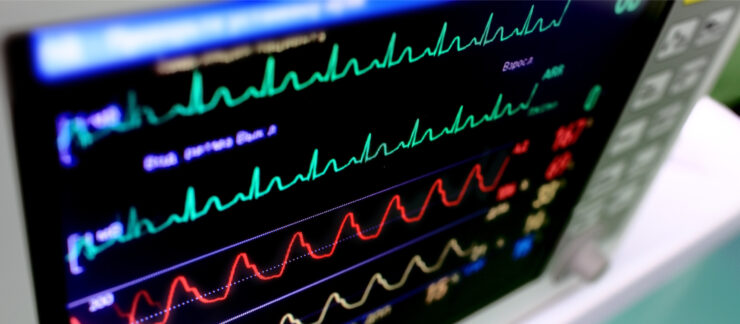As the newly appointed chief commercial officer of closely-held Sensium Healthcare, a pioneer in wireless monitoring of patient vital signs, Kevin Smith is in charge of developing and executing the company’s global commercial strategy. He also controls partnering with U.S. hospitals and medical universities and building clinical evidence for SensiumVitals, the first early warning detection device to be introduced by Sensium Healthcare. Mr. Smith has almost 20 years in the medical device industry, working on developing and accelerating domestic and international sales and product launches for numerous medical companies. Prior to joining Sensium, Mr. Smith was a VP of sales and marketing for Teleflex Medical, which manufactures and sells Class 2 and Class 3 devices into the catheter lab and cardiovascular operating room environments. In this interview with BioTuesdays, Mr. Smith discusses the SensiumVitals patch, which has received regulatory approval in the U.S. and Europe, and its competitive advantages.
Let’s begin with a short history of the company.
Our technology comes from the parent company, Toumaz Group (AIM:TMZ), a manufacturer of silicon chips for high definition, digital radio solutions and communications, with operations in the UK, Romania, Hong Kong, China and Japan. Our patch was developed by world-renowned digital healthcare experts, including Professor Chris Toumazou, Regius Prof. of Engineering and founding director of the Institute of Biomedical Engineering at Imperial College London.
What is SensiumVitals and how does it work?
It’s a lightweight, disposable patch attached to a patient’s chest that wirelessly monitors vital signs of patients in hospital general wards and emergency departments. The patch is designed to provide an early warning if a patient’s condition deteriorates. It monitors heart rate, respiration and body temperature every two minutes, with alerts if readings exceed pre-set thresholds. The wireless patch sends these readings via a router-like bridge to a nurse’s station or any Microsoft-based web-enabled device, including hand-held devices, for instant and easily accessible communication. In the not too distant future, this will be the norm in hospitals, care homes and at home.
What are the benefits?
SensiumVitals allows clinicians to make earlier interventions, which improve patient care, shortens hospital stays and lowers heath care costs. By notifying clinicians of changes in patients’ vital signs, nurses can initiate treatment before any condition worsens. Early testing of SensiumVitals indicates that the patch has been effective as an early warning system for detecting the onset of Sepsis, which has been linked to half of all hospital deaths. Nurses play a vital role in identifying sepsis by monitoring key vital signs. However, in general care areas of a hospital, vital signs are typically taken during routine rounds once every four-to-eight hours. If a patient deteriorates between these rounds, the warning signs can go undetected for hours, leading to potentially serious and costly consequences. Some hospitals are even leaning towards keeping patient nighttime interruptions to a minimum and are recommending avoiding the taking of vital signs after 11 pm to allow for maximum patient rest.
SensiumVitals can send readings to a nurse’s station or any Microsoft-based web-enabled device, including hand-held devices, for instant and easily accessible communication.
What makes SensiumVitals unique?
The silicon chip is what gives our patch its competitive advantage over other patient monitoring devices, which rely on power hungry Bluetooth or Wi-Fi connections. Our patch is lightweight at only 15 grams so patients are able to walk around and patient mobility is a key to faster recovery time. The patch is discarded when a patient is discharged, removing the need for cleaning and sterilization to prevent cross-contamination. The system uses very low power radio waves to transmit a patient’s information and is easily integrated with existing hospital IT systems.
How are you positioning the device?
In the hospital setting, we are targeting emergency admissions, especially patients with potential instability; post-surgical units; patients awaiting a formal review, medical results or further treatment; the elderly who can deteriorate quickly; and certain patient groups, such as oncology/chemotherapy and those with autoimmune diseases, which are more susceptible to infection.
SensiumVitals allows clinicians to make earlier interventions, which improve patient care, shortens hospital stays and lowers heath care costs.
How big is the market?
We figure there is a potential $1.5-billion global market for hospital-based wireless monitoring, with the market equally divided in North America and the rest of the world.
What’s the status of your commercialization strategy?
The patch is currently in trials at two leading UK National Health Service hospitals: St. James University Hospital in Leeds and Queen Elizabeth Hospital in Birmingham. In the U.S., we’re gearing up to begin clinical studies at a leading hospital to prove the clinical and economic benefits of the patch.
And what are your plans for eventual distribution?
We have a small business development team in the U.S. to support existing customers and follow through on leads with larger hospitals groups ahead of an accelerated deployment. In rest of the world territories, interest in the system continues to build. SensiumVitals has been deployed in hospitals in the UK, France, Italy, Germany, Portugal, and Australia. A growing number of these deployments are moving from initial evaluation to full-scale integration with hospital IT systems. Worldwide, the Sensium Healthcare has a qualified pipeline of 200 hospitals.
What’s in the company’s pipeline?
We are continuing product development with system enhancements for a broader hospital rollout with a next generation chip. Expansion into the home and care home markets with a patch following a hospital discharge is also in the pipeline.







